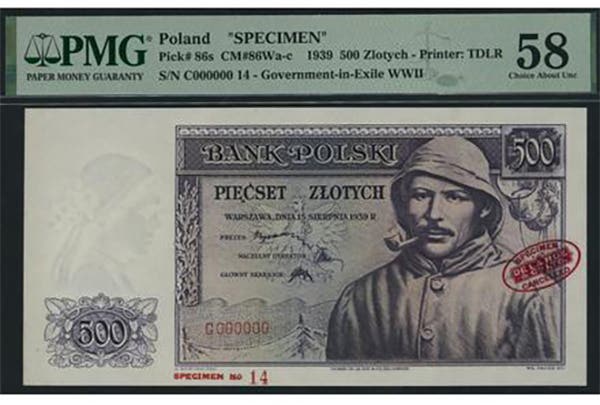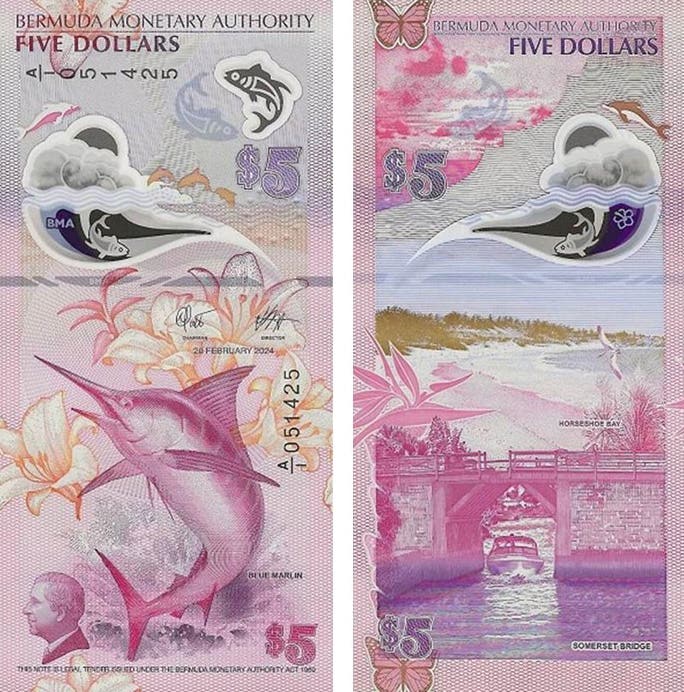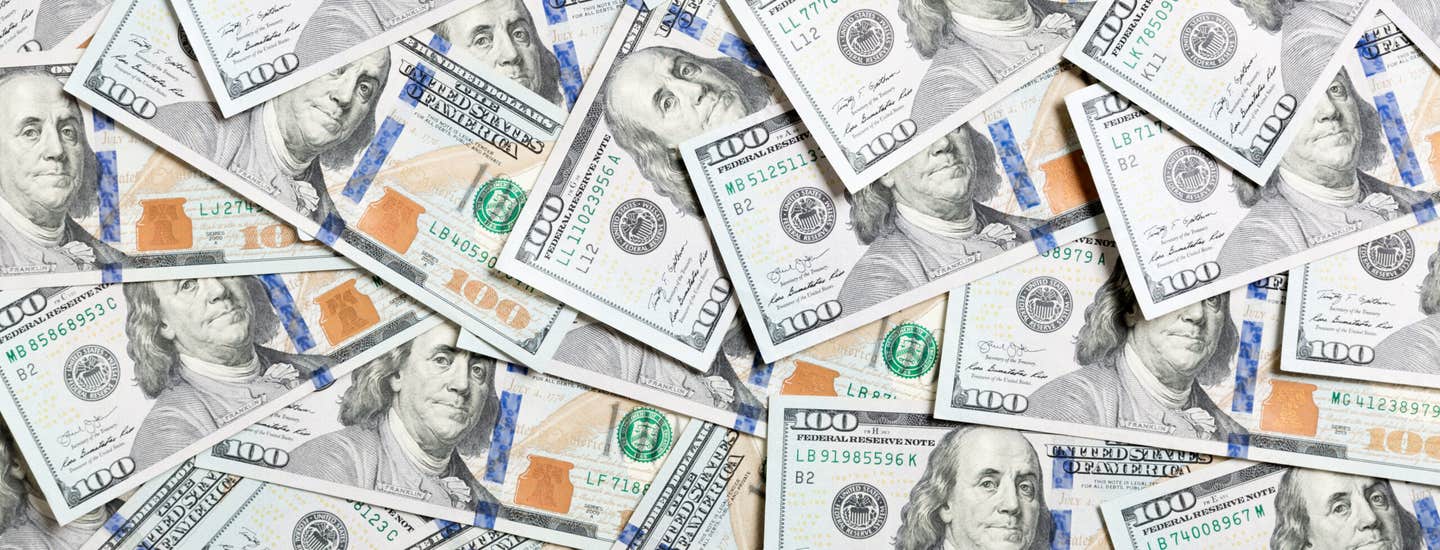Online database of national bank presidents, cashiers debuts
By Peter Huntoon The August 26, 2018, issue of The E-Sylum, the online weekly publication of the Numismatic Bibliomania Society edited by Wayne Homren, contained an announcement from Newman Numismatic…
By Peter Huntoon
The August 26, 2018, issue of The E-Sylum, the online weekly publication of the Numismatic Bibliomania Society edited by Wayne Homren, contained an announcement from Newman Numismatic Portal project coordinator Len Augsburger that the portal had just received a huge accession from Andrew Pollock III pertaining to National Bank Notes.
The announcement revealed that Pollock had compiled a complete yearly listing of the bank presidents and cashiers that he abstracted from the annual reports of the Comptroller of the Currency for all 14,348 national banks chartered through 1935.
Whoa, this was beyond belief! National Bank Note collectors have been dreaming about a compilation of that data for decades, but the task was so huge that it had never been accomplished.
I immediately logged on to the portal and, with a little guidance from Augsburger, was able to access this trove. Here is how to do it.
Start on this page: https://archive.org/details/NationalBankSpreadsheetsGuide
In the right-hand column, about half way down, select “zip.”
A large (31MB) zip file will download to your computer. It takes a minute or more. Depending on your operating system you should be able to examine the data directly after downloading (some earlier versions of Windows may require “unzip” first).
I couldn’t believe it – there it was. Not only did Pollock list the presidents and cashiers, he also included the all-important annual total bank resources and circulations.
This compilation ranks right up there with Louis Van Belkum’s compilation of the bank-by-bank National Bank Note issuance and summary bank history information that comprises the cores of the Hickman-Oakes and Kelly catalogs.
I had not run across Pollock, so my curiosity was seriously piqued. I immediately asked Augsburger to forward an email to him and was rewarded with a cordial response on Aug. 27, which also happened to be my birthday. Obtaining this information and “meeting” the compiler ranks as the most splendid birthday present of my 76 years. The following is a verbatim transcript of his first reply:
“Thanks so much for your interest in my national bank research. I’d be delighted for you to publicize this work. I regard this work as a simple compilation and open source, so it’s free for all to use any way they wish.
“I collected coins as a child, and during the 1970s and 1980s, built up a decent numismatic library covering coins, tokens, medals, paper money, mint histories, etc. I landed a job with Bowers and Merena in 1987, and spent approximately 25 years working for the company and its successors.
“I’m now 63 and retired, and spend about 80 hours a week pouring over original source documents available online with a view to eventually publishing a series of volumes on national banks to serve as companion material to standard references on national bank notes.”
I knew the source he was mining. He was looking at digital scans of the annual reports of the Comptroller of the Currency that are available through the fabulous FRASER digital library maintained by the Federal Reserve Bank of St. Louis. FRASER is the acronym for Federal Reserve Archival System for Economic Research reached via https://fraser.stlouisfed.org/
This fellow had abstracted the data from scans of 73 volumes that take up 15.5 feet of shelf space in my library. Beyond belief! I had to learn more. I quickly followed up with more questions.
I asked,“In a nutshell, how did you actually distill the data in your spreadsheets. I understand that you mined the Comptroller reports on FRASER but it took serious computer skills to abstract the relevant data from those scans. Give me a thumbnail sketch of the process.”
His answer startled me:
“No special computer skills; I just manually copied the data from the reports into Excel spreadsheets by simple data entry, and usually had a daily target of about 500 listings. There was a separate spreadsheet for each year from 1865 through 1935 (excepting 1885, as bank statements were evidently omitted in that year). I started with 1867, and once this was complete, I used it as a template for the 1868 spreadsheet, making changes as needed. The same process was used for all the other annual spreadsheets through till 1935 inclusive. Originally, these annual spreadsheets omitted the numerical bank statistics (bank assets and NBN circulation), which were added later.”
I then asked, “Are you a collector of nationals, and if not, what drew your interest to these data?”
“I don’t collect nationals, but was attracted to the project when I became aware of the vast online resources (all original source materials) pertaining to the topic. I like long-term research projects, so this was ‘right up my alley’ so to speak.”
There we have it. The fellow spent three years, up to 80 hours per week, usually adding 500 entries per day, to get this enormous job done. The total number of entries in his file is 502,460 – that’s half a million, folks. Why? Because he enjoys compiling data from original sources for other people to use and enjoy. Much more on that below.
Here are some facts. A few serious National Bank Note collectors began the process of compiling these data, and some got quite far into the project. Andrew Shiva of the National Currency Foundation set a goal of doing this job as a priority several years ago and employed help to do it. That attempt fizzled, as did similar undertakings by others, because the people burned out. The job became overwhelming once they bogged down in the middle years when the number of operating banks surged from over 3,000 to over 8,000 banks. Remember, they faced writing a spreadsheet line for every one of those banks for every remaining year.
As soon as I realized that Pollock had succeeded, I knew we were dealing with an incredibly disciplined, dedicated, and determined individual. Not only that, he was a masochist. And for what? He doesn’t even have a dog in this National Bank Note fight!
But this isn’t the end of this man’s story. He has been compiling authoritative lists of data and maintaining websites for much of his life. Let me introduce you to the ones I know about.
He is the author of two books.
Advertisement Index to the Boston Newsletter and Massachusetts Gazette, 1704-1776. Heritage Books CD-ROM. 2001. This index features approximately 10,000-12,000 alphabetically-listed entries for individuals, businesses, ships, etc. incorporating historical and biographical information gleaned from an estimated 50,000-60,000 advertisements. Nearly 3,700 pages.
United States Patterns and Related Issues. This is the standard reference book on experimental U.S. coins issued from 1792 to circa 1979. Over 500 pages.
Pollock has created websites on a variety of numismatic, religious and ornithology topics. The first two in this list are the most popular.
Numismalink Directory (http://www.numismalink.com) is a classified directory of internet resources pertaining to rare coins, medals, tokens, and paper money. It profiles numismatic bibliographic resources, organizations, and educational sites. His list of links to world mints is the most comprehensive anywhere.
Deo est Gloria Directory of Religious Life Communities (http://www.deoestgloria.com) is a directory of Roman Catholic religious life communities, one of the largest online directories of monasteries and religious orders in the English-speaking world with more than 1,800 listings.
Numismatic Register: The 17th-Century Coinage of Massachusetts, Maryland, and the Sommer Islands (http://www.coinfacts.com/Administrative/numismatic_register_colonials.htm).
Numismatic Register: Bechtler Gold Coins (http://www.coinfacts.com/numismatic_registers/bechtler_gold_coins_register.htm).
Numismatic Register: US Half Dollars, 1794-1797 (http://www.coinfacts.com/Administrative/numismatic_registers/half_dollars_1794_to_1797.htm).
Index of Harvard Graduates and Attendees Mentioned in Sibley’s Harvard Graduates, Volumes I Through XVIII, classes from 1642 through 1774 (http://www.numismalink.com/sibley.index.pdf).
Binomial and Trinomial Index to the Auk, 1884-1940 (Ornithology). (http://www.numismalink.com/auk.index.html).
Pollock earned a Bachelor of Science degree in Chemistry at Worchester Polytechnic Institute in 1979, then worked as a chemical technician for several years until joining Bowers & Merena in 1987. During his pre-numismatic career, he worked for Badger, a division of Raytheon, in Weymouth, Mass., from 1980 to 1983 in their process development department.
He resumed schooling, this time at the University of Kentucky, to study biology between 1983 and 1984, then returned to Quincy, Mass., to work for H. V. Shuster evaluating pharmaceuticals, dietary supplements, and other consumer products between 1985 and 1987. Then it was on to Bowers & Merena.
Juggling work and study before leaving Bowers & Merena, he then earned his Masters of Library Sciences degree from Simmons College in 1999 and in 2000-2001 served as the archivist at the Kingston Public Library in southeastern Massachusetts, where he oversaw the local history room and created findings aids for some of the repository’s collections. He now resides in New Hampshire.
He has just established himself as a giant in the field of National Bank Note currency.
This article was originally printed in Bank Note Reporter. >> Subscribe today.
If you like what you've read here, we invite you to visit our online bookstore to learn more about Standard Catalog of United States Paper Money.
NumismaticNews.net is a participant in the Amazon Services LLC Associates Program, an affiliate advertising program designed to provide a means for sites to earn advertising fees by advertising and linking to Amazon.com and affiliated websites.








